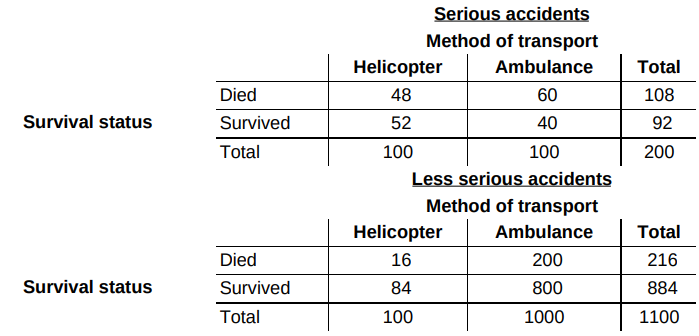Simpson’s paradoxAccident victims are sometimes taken by helicopter from the accident scene to a hospital. Helicopters save time. Do they also save lives? The two-way table summarizes data from a sample of patients who were transported to the hospital by helicopter or by ambulance.

(a) What percent of patients died with each method of transport? Here are the same data broken down by severity of accident:

(b) Calculate the percent of patients who died with each method of transport for the serious accidents. Then calculate the percent of patients who died with each method of transport for the less serious accidents. What do you notice?
(c) See if you can explain how the result in part (a) is possible given the result in part (b).
Note: This is an example of Simpson’s paradox, which states that an association between two variables that holds for each value of a third variable can be changed or even reversed when the data for all values of the third variable are combined.









